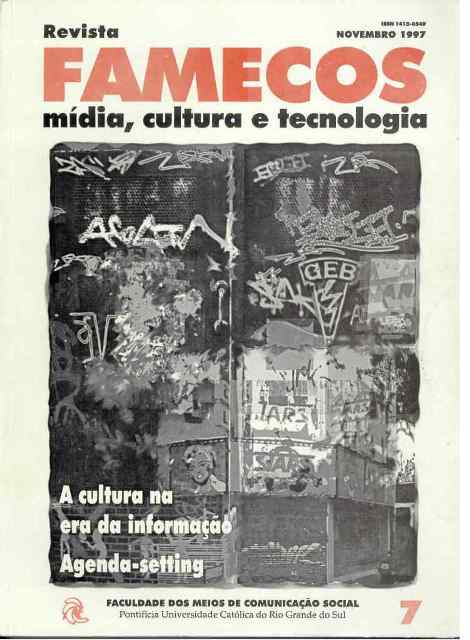The drama in telejournalism
DOI:
https://doi.org/10.15448/1980-3729.1997.7.2991Keywords:
Communication, telejournalism, dramatizationAbstract
In the first place, the reporter needs the recourse of concentration, essential above all in the theater, so that such "extras" do not interfere with speech. Secondly, these "extras" can not, of course, draw attention to themselves, much less pass in front of the camera. All this is necessary so that the bulletin, also called passage or stand-up, is composed in such a way to contribute to the "plot" of the report.Downloads
References
ARNETT, P. Ao Vivo do Campo de Batalha. Rio de Janeiro, Rocco, 1994.
CORRAGE, J. As Comunicações Não-Verbais. Rio de Janeiro, Zahar, 1980.
HAMACHEK, D. Encontros com o Self. Rio de Janeiro, Interamericana, 1978.
MELO, J.M. A Opinião no Jornalismo Brasileiro.Petrópolis, Vozes,
ORLANDI, E.P. Interpretação-Autoria: Leitura e Efeitos do Trabalho Simbólico. Petrópolis, Vozes, 1996.
PIGNATARI, D. Informação Linguagem Comunicação. São Paulo, Cultrix, 1981.
RECTOR, M. & TRINTA, A. R. Comunicação do Corpo. Rio de Janeiro, Ática, 1990.
SQUIRRA, S. Boris Casoy: O Âncora no Telejornalismo Brasileiro.
Petrópolis, Vozes, 1993.
STANISLAVSKY, C. A Construção do Personagem. Rio de Janeiro,
Civilização Brasileira, 1983.
Downloads
Published
How to Cite
Issue
Section
License
Copyright
The submission of originals to Revista Famecos implies the transfer by the authors of the right for publication. Authors retain copyright and grant the journal right of first publication. If the authors wish to include the same data into another publication, they must cite Revista Famecos as the site of original publication.
Creative Commons License
Except where otherwise specified, material published in this journal is licensed under a Creative Commons Attribution 4.0 International license, which allows unrestricted use, distribution and reproduction in any medium, provided the original publication is correctly cited.






